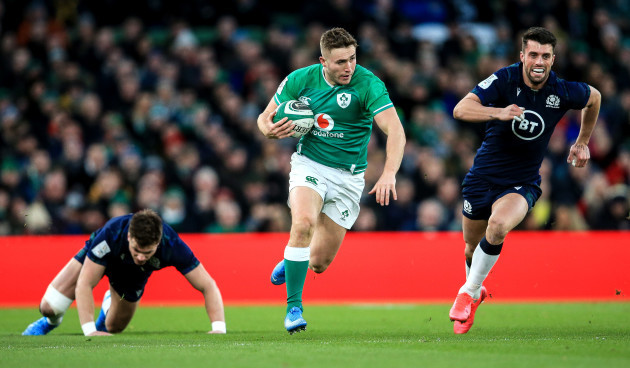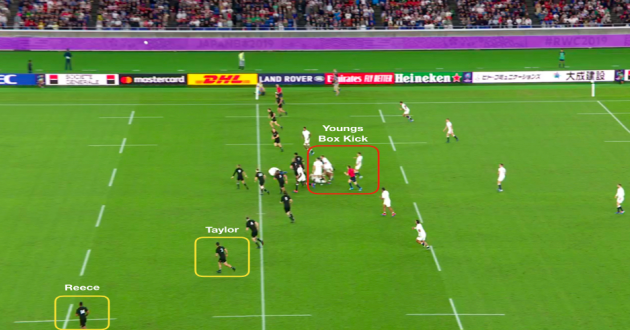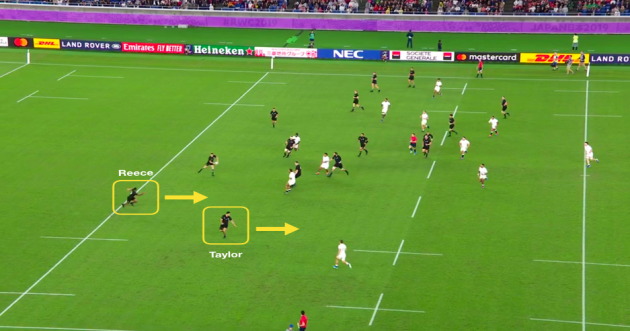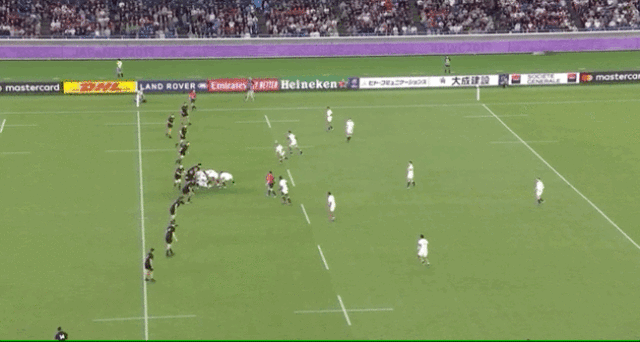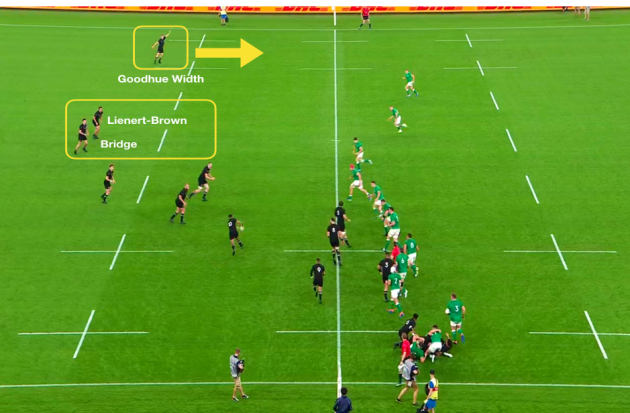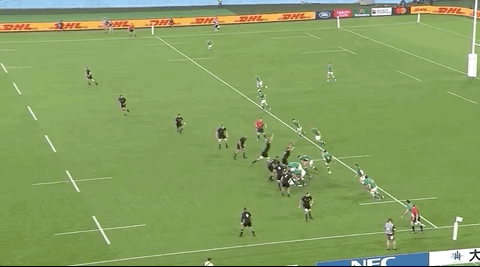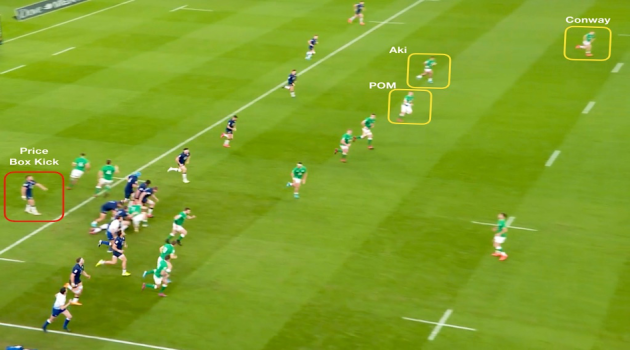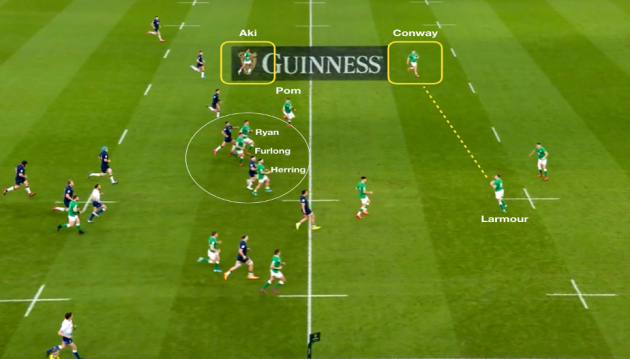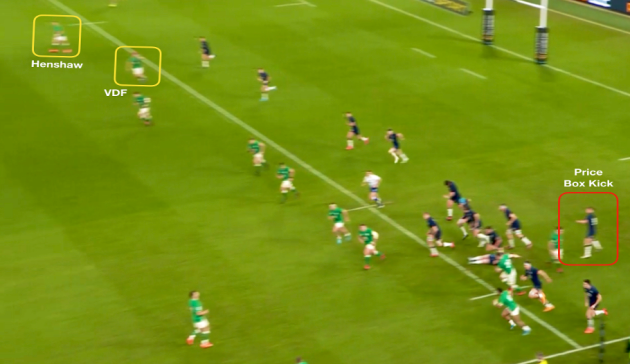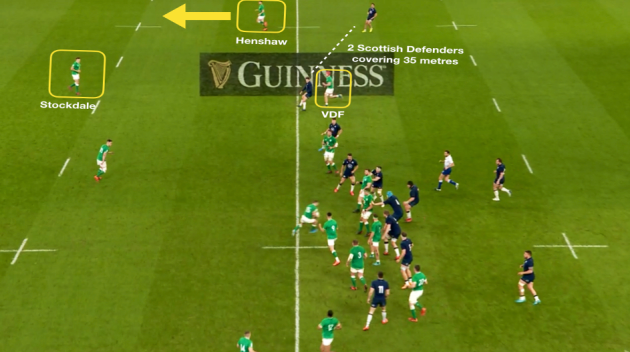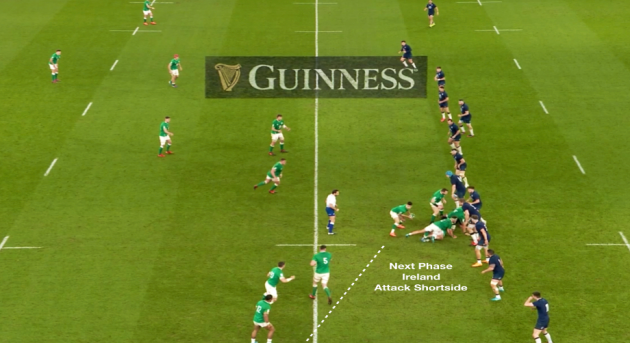IRELAND’S 19-12 WIN over Scotland in the opening round of the Six Nations ensured Andy Farrell’s tenure as head coach got off to a solid start.
There were tentative steps in the right direction regarding components of Ireland’s play at the Aviva Stadium on Saturday and at this early juncture, incremental variation is all that should be expected of both the coaching staff and players.
Information overload can lead to ambiguity and hesitation in players which can be hugely detrimental to performance, diluting aggression levels. With new attack, defence and forwards coaches in place, fresh information needs to be slowly integrated so as not to compromise the main goal, which ultimately is winning the Six Nations.
Tellingly, Scotland’s coaching structure has seen the least disruption of any team in this year’s Six Nations and Gregor Townsend’s men delivered a performance bristling with physicality. But for Stuart Hogg’s fumble over the try line and an inexcusably high penalty count, Scotland could have left Dublin with a win for the first time since 2010.
The selection of Jordan Larmour at fullback signifies a more attacking intent from Ireland. For over a decade, Rob Kearney had no peer in terms of aerial skills, his backfield coverage was exceptionally intelligent, whilst his booming left boot gave Ireland great versatility from a kicking perspective. Whilst Larmour has definite scope for growth in all of those areas, his electric footwork can be a point of difference for Ireland, particularly from a counter-attacking perspective.
Based on the stats from last weekend, Larmour has clearly been instructed to utilise his strengths. Of his seven kick receipts against Scotland, he only kicked back twice, one of which was a chip and chase. On the other five occasions, the Leinster man sought to exploit Scotland’s kick-chase with ball in hand.
Interestingly, his five attempts yielded no linebreaks. At international level, kick chases are exceptionally well organised and Larmour’s running threat will be well scouted by all opposition, therefore variation to his game will be critical going forward. Having the triple threat of run, pass or kick ability will add unpredictability to his game and, as a result, create more space for both himself and players around him.
After paying particular attention to Ireland’s counter-attack last Saturday, there is a tactical shift required to facilitate Larmour’s ability to be a triple threat and therefore make Ireland a more potent kick return side.
Background
The All Blacks have long been considered one of the leading counter-attacking sides in world rugby.
Christian Cullen, Beauden Barrett, Mils Muliaina, Israel Dagg have been exceptional fullbacks with top-end pace and memorizing footwork. There is undoubtedly a profile of athlete that New Zealand teams select in this position that might differ from other countries, with great emphasis placed on attacking capabilities.
However, what contributes to the potency of New Zealand’s counter-attack is the work rate of players off the ball to manipulate defences.
Anticipation
The first critical component to the All Blacks’ counter strategy is ‘LEAVE EARLY.’ What this means is that once the opposition gives the cue that they are about to kick, players on the far edge of the defensive line (furthest away from the ruck) begin their retreat to backfield early to provide a support option on counter-attack.
Clearly, they still have to be mindful of any late decision from the opposition to run the ball, so it is only a five or ten-metre offset prior to the kick.
The first image below, from New Zealand’s defeat to England at the Rugby World Cup last year, highlights the ‘leave early’ tactic.
In this example, Ben Youngs has just box-kicked. Note how Sevu Reece and Codie Taylor (highlighted in yellow) have already started to retreat having recognised the kick cues.
Ball Support and Wide Support
The second important characteristic of the counter strategy is the order of support. The widest player in the frontline defence, traditionally the openside wing, will work infield to support the ball, whilst the second-last defender will generally work to the touchline to offer width to attack.
This is logical as the widest player is most likely the quickest and therefore can be an immediate pass option for the fullback, while the players creating width will be afforded more time before the ball reaches them.
As the image below shows, Reece has executed the two components of the counter strategy perfectly and is in position to receive a pass from Barrett and exploit the space afforded by England’s narrow kick chase.
Taylor is still working to width but note his scanning pattern, which is important. Such is the All Blacks’ attacking mindset on kick return, the hooker is looking for potential space to exploit.
Taylor ends up in position to receive the pass to execute a 2v1 on the edge and generate momentum for his team.
[Click here if you cannot view the clip above]
The second example we’re going to look at, from New Zealand’s win over Ireland at the RWC, is another great illustration of the counter strategy in operation.
As we can see below, Jack Goodhue and Anton Lienert-Brown are both in ‘leave early’ mode prior to the Conor Murray kick, whilst Goodhue is also communicating with the openside wing, George Bridge (out of picture), to support the ball.
As it is a contestable box kick from Murray, there is no opportunity for Reece in the backfield to shift the ball immediately.
But from the resulting ruck, the framework of New Zealand’s kick return policy is perfectly shown, as we can see below.
Left wing Bridge has worked infield towards the ball whilst the second-last defender, Goodhue, has worked hard to create width and stretch Ireland’s defence which ultimately results in a dominant carry for his centre partner Lienert-Brown.
Crucially, it is the counter strategy that gives New Zealand momentum from which to attack with.
[Click here if you cannot view the clip above]
While neither clip leads to an immediate linebreak, utilising the wide-angle functionality in the Hudl Sportscode analysis software perfectly illustrates how essential a collaborative approach to counter-attack is to provide run, pass or kick space to game-breakers such as Barrett.
Ireland
A similarly coordinated approach from Ireland would massively benefit Larmour and his team. There are a couple of examples to show from last weekend that highlight the growth potential in this area.
As Ireland defend their wingers high in the defensive line, it does compromise their ability to get into backfield.
However, Scottish scrum-half Ali Price has already executed the box-kick at this point and open wing Andrew Conway (highlighted in yellow below) has only begun to retreat.
The winger could definitely be able to read the cues earlier and motion to backfield quicker.
Bundee Aki (highlighted in yellow above) is the slowest to react to the kick and is headed in a straight line to backfield rather than to width. Peter O’Mahony (also highlighted in yellow) is another option to provide width given Ireland are playing 1-3-3-1 formation, but he also runs directly back to his own try line.
As Larmour catches the ball, the lack of options to the fullback is apparent.
Conway is still ahead of the ball, neither Aki or O’Mahony have provided width, whilst Johnny Sexton is not a running threat in his current position just to the right of Larmour.
Interestingly, Tadhg Furlong, Rob Herring and James Ryan have worked hard to provide corridors for Larmour to run through in the middle of the pitch which is a positive action from the tight five.
With no passing options or width in Ireland’s attack, the Scottish defensive line is under little threat and therefore Larmour becomes a relatively easy proposition to defend.
The implication of a lack of collaboration is highlighted on second phase below, as Ireland are left with no real shape or momentum to attack with.
Later in the game, Ireland are faced with another Price box kick.
Anticipation to ‘leave early’ from edge defenders Robbie Henshaw and Josh Van der Flier is poor as they are still in the frontline defence long after the ball is kicked, as we can see below.
The second image below is a great visual of the potential evolution to Ireland’s counter-attack.
Jacob Stockdale has done well to come infield and support the ball.
Had Henshaw and Van Der Flier’s worked earlier and utilised similar scanning patterns to Codie Taylor, then Ireland could have exploited the run space afforded to them on the edge with only two Scottish players defending half the pitch.
Rather than passing to Sexton, who looked animated to receive the pass, Larmour instead goes on instinct and takes the ball into contact.
Ireland end up attacking back down the short side where they do gain momentum that ultimately leads to a penalty, however the initial linebreak opportunity is lost.
The thought of Ireland becoming a truly lethal counter-attacking team is an exciting prospect.
They most certainly have the ammunition, now it is a matter of coordinating the attack.
It will be interesting to see how this component, along with the rest of Ireland’s game, evolves as the Six Nations develops.
